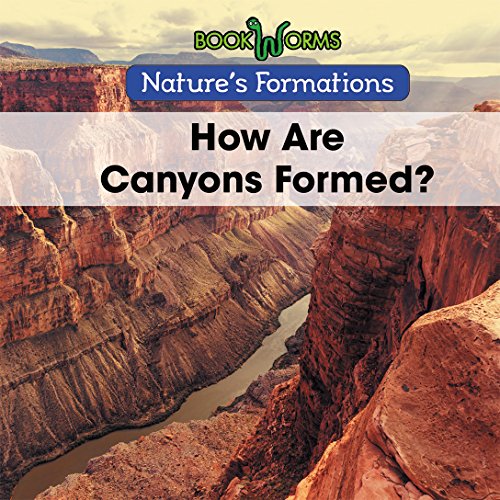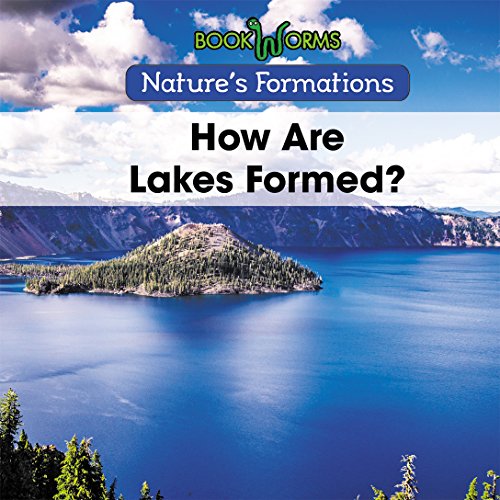-
Butterflies
B J Best
Library Binding (Cavendish Square Publishing, Jan. 1, 2017)Monarch butterflies travel over two thousand miles as they chase the seasons in search of milkweed, warm temperatures, and safety. This book simply and clearly explains this cycle. Kids will be amazed to learn that such a small animal can travel so far. L
L
-
Rescue Helicopters
B. J. Best
Library Binding (Cavendish Square, Aug. 15, 2017)Introduces the aircraft that are used in rescues in dangerous or remote places that other vehicles can't reach, covering how a helicopter search-and-rescue mission works, including how the helicopter team works together to save someone in distress. O
O
-
How Are Canyons Formed?
B J Best
Library Binding (Cavendish Square, Aug. 15, 2017)The Grand Canyon in Arizona is an amazing natural feature. It is so majestic and immense, yet it was carved simply: by water. Kids will be amazed to learn that, given enough time and enough flow, water can carve deeply into the Earth. This book will look at how water erodes stone, and how different stones wear away at different rates. The results are some of natures most beautiful landforms. L
L
-
Police Cars
B. J. Best
Library Binding (Cavendish Square, Aug. 15, 2017)Introduces the vehicles that police officers use to help protect the public and keep cities and towns safe, covering how they are stronger than normal cars and the equipment inside them that helps police officers do their work well. M
M
-
How Are Lakes Formed?
B. J. Best
Library Binding (Cavendish Square, Aug. 15, 2017)Describes the various ways in which lakes are formed, including melting glaciers, rivers blocked by a dam, and rainwater filling the tops of dormant volcanoes. O
O
-
A Gorilla's Nest
B J Best
Paperback (Cavendish Square Publishing, Aug. 15, 2018)Kids might think it's amusing to hear that gorillas sleep in the same type of home as a bird, yet that's exactly what gorillas do: they make nests in trees or on the ground out of available vegetation. Unlike birds, though, most gorillas make a new nest every night. This book illustrates this fascinating and surprising behavior for young readers. M
M
-
The Pros and Cons of Wind Power
B. J. Best
Library Binding (Cavendish Square, Jan. 15, 2016)Looks at the benefits and harmfulness of wind energy, from its efficiency to its environmental impacts. T
T
-
A Termite's Colony
B J Best
Paperback (Cavendish Square Publishing, Aug. 15, 2018)"A book for young readers about how termites and their colonies survive."-- M
M
-
Cocoa to Chocolate
B. J. Best
Library Binding (Cavendish Square, Jan. 1, 2017)Chocolate is the favorite treat of many children around the world, but how does it begin with a small, bitter-tasting bean? Students will learn the process of drying, roasting, grinding, and pressing the beans to make the smooth and sweet candies many kids love. M
M
-
Humpback Whales
B J Best
Paperback (Cavendish Square Publishing, Jan. 1, 2017)Humpback whales routinely travel about three thousand miles in their migrations, one of the longest distances of any mammal. They feed in icy waters in the Arctic and Antarctic Oceans, and move to temperate and tropical waters to breed. Kids will learn about the journeys of one of the most amazing and awe-inspiring animals on the planet. O
O
-
Salmon
B. J. Best
Library Binding (Cavendish Square, Jan. 1, 2017)Salmon live for years in the ocean, but only reproduce once. They swim up the river where they were born, spawn, and then typically die. This approach to reproduction offers unique advantages and challenges. Kids will learn about the amazing ability of these fish to return to their breeding grounds, and how the life cycle of the salmon ensures continuity of the species. M
M
-
Humpback Whales
B J Best
Library Binding (Cavendish Square Publishing, Jan. 1, 2017)Humpback whales routinely travel about three thousand miles in their migrations, one of the longest distances of any mammal. They feed in icy waters in the Arctic and Antarctic Oceans, and move to temperate and tropical waters to breed. Kids will learn about the journeys of one of the most amazing and awe-inspiring animals on the planet. K
K